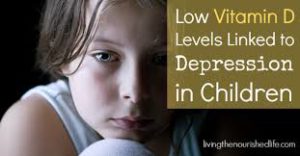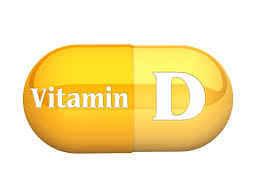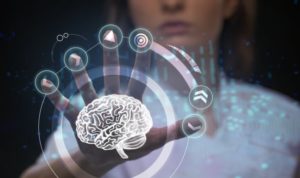 BACKGROUND
BACKGROUND
SOURCE: Fish OIl & Asthma NEJM
N Engl J Med 2016; 375:2530-2539December 29, 2016DOI: 10.1056/NEJMoa1503734

 BACKGROUND
BACKGROUND
SOURCE: Fish OIl & Asthma NEJM
N Engl J Med 2016; 375:2530-2539December 29, 2016DOI: 10.1056/NEJMoa1503734
Economic Impact of Childhood and Adult Attention-Deficit/Hyperactivity Disorder in the United States   Â
Objective: Attention-deficit/hyperactivity disorder (ADHD) is one of the most prevalent mental disorders in children in the United States and often persists into adulthood with associated symptomatology and impairments. This article comprehensively reviews studies reporting ADHD-related incremental (excess) costs for children/adolescents and adults and presents estimates of annual national incremental costs of ADHD.
Method: A systematic search for primary United States-based studies published from January 1, 1990 through June 30, 2011 on costs of children/adolescents and adults with ADHD and their family members was conducted. Only studies in which mean annual incremental costs per individual with ADHD above non-ADHD controls were reported or could be derived were included. Per-person incremental costs were adjusted to 2010 U.S. dollars and converted to annual national incremental costs of ADHD based on 2010 U.S. Census population estimates, ADHD prevalence rates, number of household members, and employment rates by age group.
Results: Nineteen studies met the inclusion criteria. Overall national annual incremental costs of ADHD ranged from $143 to $266 billion (B). Most of these costs were incurred by adults ($105B!$194B) compared with children/adolescents ($38B!$72B). For adults, the largest cost category was productivity and income losses ($87B!$138B). For children, the largest cost categories were health care ($21B!$44B) and education ($15B!$25B). Spillover costs borne by the family members of individuals with ADHD were also substantial ($33B! $43B).
Conclusion: Despite a wide range in the magnitude of the cost estimates, this study indicates that ADHD has a substantial economic impact in the United States. Implications of these findings and future directions for research are discussed. J. Am. Acad. Child Adolesc. Psychiatry, 2012;51(10):990 –1002.
Key Words: ADHD, cost of illness, societal costs, children, adults
REF’s:Â Jalpa A. Doshi, Ph.D., Paul Hodgkins, Ph.D., Jennifer Kahle, Ph.D., Vanja Sikirica, Pharm.D., Michael J. Cangelosi, M.P.H., Juliana Setyawan, Pharm.D., M. Haim Erder, Ph.D., Peter J. Neumann, Sc.D.
For full article see SOURCE: Â economic-impact-jcap

To examine whether vitamin D deficiency or insufficiency is associated with depression and whether vitamin D supplementation is an effective treatment for depression.
Empirical papers published in recent years were identified using three search engines and online databases – PubMed, Google Scholar and Cochrane Database. Specific search terms used were ‘vitamin D’, ‘depression’ and ‘treatment’ and articles were selected that examined the association between vitamin D deficiency/insufficiency and depression, vitamin D supplementation and Vitamin D as a treatment for depression. Our review weighted more recent studies (from 2011), although also considered earlier publications.
Empirical studies appear to provide increasing evidence for an association between vitamin D insufficiency and depression, and for vitamin D supplementation and augmentation in those with clinical depression who are vitamin D deficient. Methodological limitations associated with many of the studies are detailed.
Articles were restricted to those in the English language while publication bias may have weighted studies with positive findings.
There remains a need for empirical studies to move beyond cross-sectional designs to undertake more randomized controlled longitudinal trials so as to clarify the role of vitamin D in the pathogenesis of depression and its management, as well as to establish whether currently suggested associations are clinically significant and distinctive.
DOI: http://dx.doi.org/10.1016/j.jad.2016.08.082 // http://www.jad-journal.com/
Supplementation might help patients with depression, seasonal mood disturbances
In the United States, >50% of psychiatric inpatients have vitamin D deficiency—<30 nmol/L (<12 ng/mL).1 A growing body of literature has found associations between vitamin D deficiency and psychiatric illnesses, particularly depression. Several randomized controlled trials (RCTs) have demonstrated that vitamin D supplementation can benefit depression symptoms. In this article, we discuss the current literature on vitamin D and psychiatric illness, and provide practical information for clinicians on the use of vitamin D supplementation.
SOURCE: vd-depression
Bottom Line Low levels of vitamin D are associated with depression, cognitive dysfunction, and seasonal affective disorder (SAD). Evidence also suggests a potential link between vitamin D deficiency and psychotic disorders. It is not clear whether vitamin D deficiency is a cause or effect of depression. Limited research suggests vitamin D supplementation might have a role in treating depression and SAD.
Is your parenting style making your child sick?
A growing body of research is finding that the way parents relate to their children affects more than their mental and emotional health. It also has an impact on their physical well-being.
In a recent study, researchers compared five separate parenting styles. One in particular—called poor monitoring and supervision—was associated with higher levels of inflammation and an overactive immune-system response in the children. Although both are risk factors for certain conditions such as cardiovascular disease, the research would have to follow the children for many years to know if they had an increased chance of developing such disorders.
Parents categorized for poor monitoring and supervision scored high on a questionnaire on issues such as whether they check to see if their child comes home on time and not telling their children where they’re going.
“These are parents who don’t know where their kids are and what they’re doing,” saysNick Allen, a psychology professor at the University of Oregon and senior author of the study. “They are probably pushing them to be more independent than they are really ready for and it might be creating some stress for the kids.”
Other parenting styles studied included how consistent parents were in their disciplinary techniques and how much positive encouragement they provided to their children. The study, which controlled for other possible influencing factors, involved 102 children, with an average age of 9, and their parents. It was published in the Journal of Family Psychology.
More extreme parenting behaviors, such as abuse and neglect, have been more extensively studied for their impact on children’s health. “But we’re looking at differences in the emotional environment of a family that are much more in the normal range and we still see an effect,” Dr. Allen says.
Other research by Dr. Allen and colleagues showed how family environment can impact brain development. A study published in PLOS One earlier this year found that more aggressive behavior by mothers altered the development of adolescents’ brains in areas associated with thinking and planning and responding to rewards. The study relied on MRI scans of 166 teens conducted over a period of nine years.
“We don’t yet know precisely what the effect of the altered brain development is. But we do know from other studies that changes like this are often associated with great risk for mental-health problems,” Dr. Allen says.
Parenting style’s effect also has been measured in terms of children’s response to vaccination. A study published last year in the journal Brain, Behavior, and Immunityfound that when parents exhibit higher levels of anger and coercive behavior in a parent-child interaction, the children have a weaker immune response to the meningitis vaccine.
The study involved 164 children, ages 10 and 11, who were videotaped interacting with a parent in a task that required them to resolve two sources of conflict. The researchers measured their production of antibodies four weeks, three months and six months after being vaccinated. The researchers controlled for other factors, such as physical health and body-mass index, that might also explain vaccine response, says Thomas O’Connor, a psychiatry professor at the University of Rochester and first author of the study.
Interventions to improve parent-child relationships are aimed at reducing hostility and conflict and encouraging a more sensitive response to caregiving, Dr. O’Connor says. “The next step would be to see if [such interventions] improve physical-health outcomes.”
One such intervention was tested in a study involving 272 mothers and their 11-year-old children in a rural, low-income area of Georgia. The study, published in 2014 in Proceedings of the National Academy of Sciences, was conducted by Gregory Miller, a psychology professor at Northwestern University in Chicago, and colleagues.
Half the group was assigned to a seven-week intervention designed to improve communication and awareness between parents and children. The researchers found that, by the time they turned 19, the children in the intervention group had lower inflammation levels than the control group.
“We showed that some of that was due in fact to changes in parenting and the way kids and their parents interacted,” Dr. Miller says.
SOURCE: http://www.wsj.com/articles/research-finds-parenting-style-affects-children-in-unexpected-ways-1479744903?emailToken=JRrzd/t/YX2Vh9UzbMwm2UYlZ7MDC6qHR1XbNzXSM1LBsmDUp+3k3Lkkg9byqG2hSE1m/JUP7287SSfchi9rWoqMnbNviVqvZ3RR647NwBbOYxiEzRHWIbtE7Q==

To examine whether vitamin D deficiency or insufficiency is associated with depression and whether vitamin D supplementation is an effective treatment for depression.
Empirical papers published in recent years were identified using three search engines and online databases – PubMed, Google Scholar and Cochrane Database. Specific search terms used were ‘vitamin D’, ‘depression’ and ‘treatment’ and articles were selected that examined the association between vitamin D deficiency/insufficiency and depression, vitamin D supplementation and Vitamin D as a treatment for depression. Our review weighted more recent studies (from 2011), although also considered earlier publications.
Empirical studies appear to provide increasing evidence for an association between vitamin D insufficiency and depression, and for vitamin D supplementation and augmentation in those with clinical depression who are vitamin D deficient. Methodological limitations associated with many of the studies are detailed.
Articles were restricted to those in the English language while publication bias may have weighted studies with positive findings.
There remains a need for empirical studies to move beyond cross-sectional designs to undertake more randomised controlled longitudinal trials so as to clarify the role of vitamin D in the pathogenesis of depression and its management, as well as to establish whether currently suggested associations are clinically significant and distinctive.
SOURCE: http://www.jad-journal.com/article/S0165-0327(16)30892-8/abstract
Task Force on Adolescent Assault Victim Needs.
For many years, it has been routine to treat victims of child abuse, suicide attempts, and sexual assault via multidisciplinary care protocols. Although violently injured adolescents have become commonplace in our nation’s emergency departments, no care guidelines exist that address the unique needs of these patients. The convened a task force to develop such guidelines for providers of hospital-based pediatric emergency and trauma care. The work of the task force was guided by the premise that comprehensive care of violently injured adolescents must address their psycho-social needs as well as their physical injuries.
This task force report summarizes the epidemiology of violent injury in adolescence and its physical and emotional consequences (“Part I”), and it outlines appropriate care for the victims from their arrival in the emergency department to their discharge from the hospital (“Part II”). Care of violently injured adolescents that follows these guidelines is likely to promote full recovery and to reduce the risks of reinjury and reactive perpetration.
SOURCE: AAP Gateway; http://pediatrics.aappublications.org/content/98/5/991.abstract
The early signs of schizophrenia typically happen in the late teen years, and or in someone’s early adulthood. In many cases, they are pretty tough to spot unless you are very familiar with the illness. Another reason that it can be difficult to spot early warning signs of the illness has to do with the fact that teenagers experience a variety of mood swings and eccentric behavior. 
In general, men tend to show warning signs of schizophrenia earlier than women, but there’s really no set age for illness onset. The period before actual symptoms of schizophrenia symptoms appear is known as the “prodromal” phase. During this time a doctor or professional may diagnose someone as exhibiting signs of “premorbid” schizophrenia if they think that the condition may develop.
Sometimes an anti psychotic medication may be prescribed in order to delay the onset of symptoms. The prodromal phase typically lasts anywhere from 2 to 5 years before full blown schizophrenia develops. In men these signs typically appear from age 20 to 25 and in women from age 25 to 30. Unfortunately although we do not know what causes schizophrenia, there is documentation of many common early signs that someone may be developing this illness.
It should be noted that many of these symptoms can be indicators of something as simple as major depression. However, when odd behaviors are coupled with isolation, preoccupation with religion, and the person drops out of all normal societal functions, this is a red flag for the possible development of schizophrenia.
It should be noted that many of these symptoms listed are not necessarily indicators of schizophrenia alone. There are many people that withdraw from social activities, become depressed, and sleep a lot because they are anxious, have depression, or another mental illness. However, if you experience many of these symptoms together, it is a likely indicator of schizophrenia.
If you see someone else exhibiting early signs of schizophrenia, you may want to recommend that they get in for proper psychological evaluation. If they do have schizophrenia or some other condition, most professionals will be able to tell what is going on.
Treatment for the condition as soon as possible is associated with better functioning in society and a more favorable prognosis. If the individual has a family history of schizophrenia and they are showing the early warning signs and symptoms, it is likely that they are developing the same condition as there is a genetic link.
Most people with the early warning signs of schizophrenia are not aware of their condition. It typically takes outside intervention for someone to realize that what they are experiencing is in fact a mental illness. This is because all the symptoms that they are experiencing seem so real to them. Although the onset of these symptoms may be sudden or abrupt, the majority of people show a slow, gradual onset of these early signs.
SOURCE: Mental Health Daily, http://mentalhealthdaily.com/2014/03/27/early-signs-of-schizophrenia-the-warning-symptoms-to-understand/
Effect of Psychostimulants on Brain Structure and Function in ADHD: A Qualitative Literature of MRI-Based Neuroimaging Studies
See attached document for full article: Stimulants & Brain Structure (3)